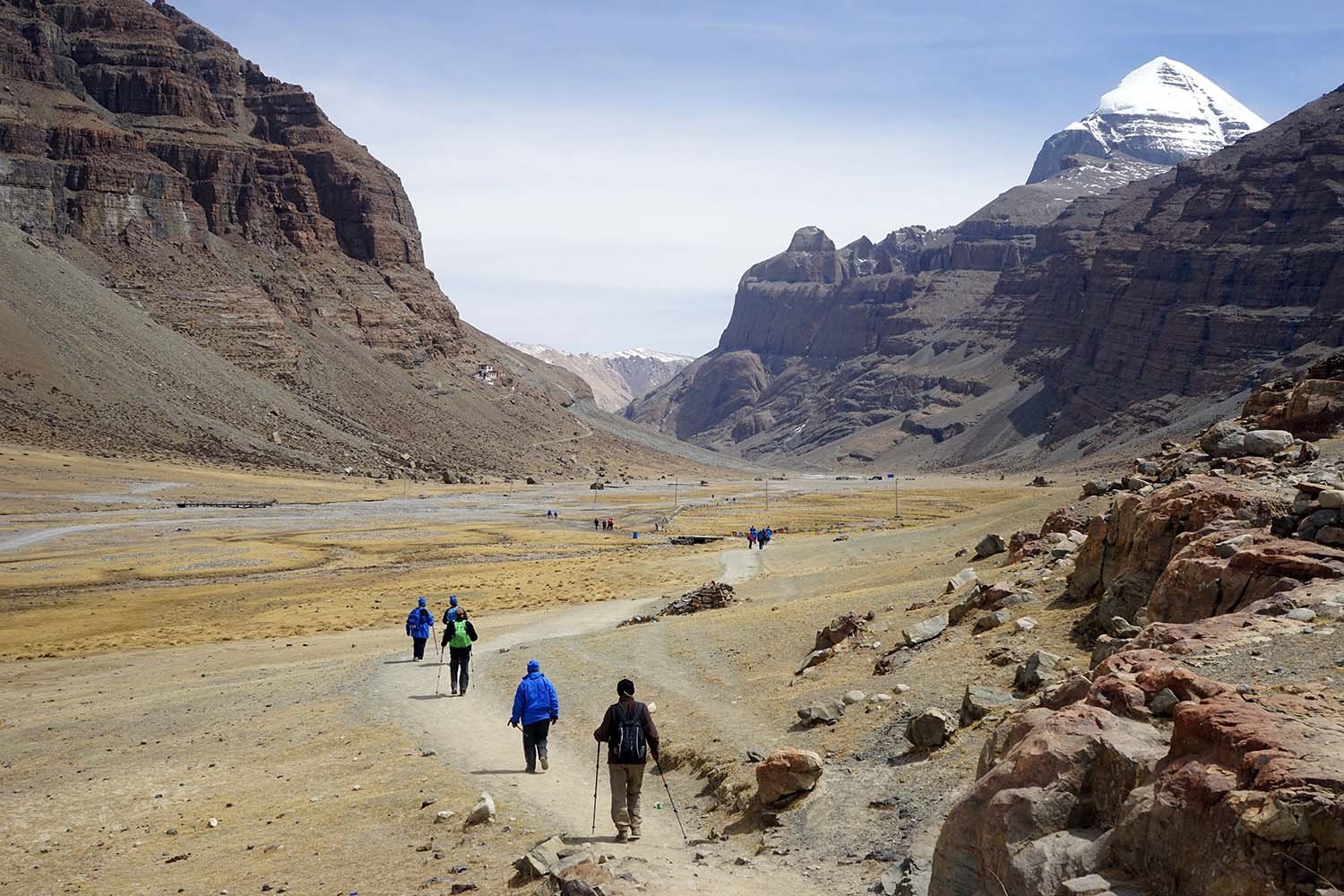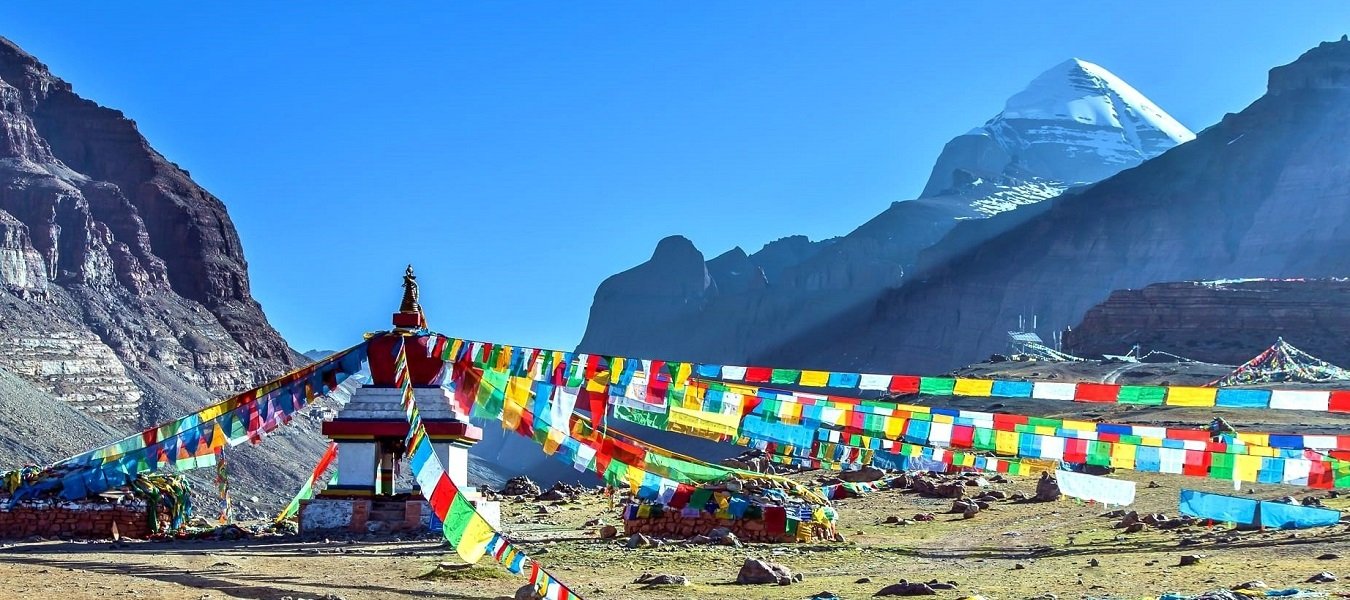Mount Kailash, a sacred peak located in the Tibetan Plateau, holds immense religious significance for Hindus, Buddhists, Jains, and Bönpos. Undertaking a pilgrimage to Mount Kailash is a journey of spiritual enlightenment, offering a profound connection with the divine. However, planning a Mount Kailash tour requires careful budgeting and preparation. Here’s a comprehensive guide to help you estimate the costs associated with this sacred pilgrimage:

1. Permits and Visas:

Obtaining the necessary permits and visas is crucial for entering Tibet and embarking on the pilgrimage. These documents typically include:

Tibet Travel Permit: This permit is mandatory for all foreign travelers visiting Tibet. The cost can vary depending on the duration of your stay and the time of year. Generally, it ranges between $200 and $300.
Chinese Visa: To enter China, a Chinese visa is required. The cost varies based on your nationality and the type of visa you apply for. Typically, the visa fee falls between $100 and $200.
2. Transportation:
Reaching Mount Kailash involves traveling to Lhasa, the capital of Tibet. From there, you can choose between various transportation options to reach the starting point of the pilgrimage:
Airfare: Flying from your home country to Lhasa is the most convenient option. The cost of airfare can vary significantly depending on your departure location, airline, and travel dates. It can range from $500 to $1,500 or more.
Train: Taking a train to Lhasa from major cities in China is another option. While it’s more affordable than flying, it’s also a longer and less comfortable journey. The cost of a train ticket typically ranges from $100 to $200.
Land Transport: Once you reach Lhasa, you can travel to the starting point of the pilgrimage by bus or private vehicle. The cost varies depending on the distance and the type of transportation you choose. Expect to pay around $50 to $100 for this leg of the journey.
3. Accommodation:
During the pilgrimage, you’ll likely stay in guesthouses or lodges along the route. Accommodation costs vary depending on the location and amenities provided. On average, expect to pay between $10 and $50 per night for basic accommodations. If you prefer more comfortable options, the cost may be higher.
4. Food:
Food expenses while on the pilgrimage can be relatively low. Local Tibetan cuisine is affordable and offers a variety of dishes to choose from. The cost of meals typically ranges from $5 to $15 per day, depending on your eating habits and preferences.
5. Additional Expenses:
Beyond the primary costs mentioned above, there are several additional expenses to consider:
Guide and Porter Fees: Hiring a knowledgeable guide and porters to assist with luggage and other tasks can greatly enhance your experience. Guide fees typically range from $100 to $200 per day, while porter fees can be around $10 to $20 per day.
Equipment and Supplies: Depending on the time of year and the conditions of the pilgrimage route, you may need to purchase or rent special equipment and supplies such as warm clothing, trekking gear, and oxygen tanks.
Insurance: Travel insurance is highly recommended to protect yourself against unexpected events and medical emergencies. The cost of travel insurance varies depending on the coverage and duration of the policy.
Souvenirs and Donations: If you wish to purchase souvenirs or make donations to monasteries and temples along the route, allocate some funds for these expenses.
Miscellaneous Costs: Remember to budget for miscellaneous expenses such as laundry, communication, and personal items.
It’s important to note that the total cost of a Mount Kailash tour can vary significantly depending on your preferences, the time of year, and the specific services you choose. However, by carefully budgeting and planning, you can ensure a meaningful and fulfilling pilgrimage experience.# Mount Kailash Tour Cost: Planning Your Pilgrimage Budget
Executive Summary:
Mount Kailash, a sacred peak revered by Hindus, Buddhists, Jains, and Bönpos, stands tall in the Tibetan Plateau. Embarking on a Mount Kailash pilgrimage is a life-changing spiritual experience, but planning the budget for this journey is crucial. This article provides a comprehensive guide to the various tour costs, accommodation options, travel permits, permits, trekking equipment requirements, food and lodging expenses, and additional considerations to ensure a meaningful and fiscally responsible pilgrimage.
Introduction:
Mount Kailash, located in the Ngari Prefecture of Tibet, is renowned for its spiritual significance and natural beauty. Pilgrims from around the world undertake arduous treks around the sacred mountain, seeking spiritual enlightenment and blessings. However, embarking on this pilgrimage requires careful budgeting and preparation, considering the remote location, challenging terrain, and the need for specialized equipment and permits.
Tour Costs:
The cost of a Mount Kailash tour can vary depending on various factors such as the duration of the tour, the group size, the level of comfort desired, and the choice of travel agencies.
- Trekking Duration:
- The duration of the Mount Kailash trek can range from 16 to 23 days, depending on whether pilgrims choose the shorter Parikrama trek or the longer circumambulation path.
- Group Size:
- The tour cost is generally determined on a per-person basis, with larger group sizes typically offering more discounted rates due to economies of scale.
- Comfort Level:
- Travelers can choose from basic to deluxe accommodations during the trek, with pricing varying accordingly.
- Choice of Agency:
- Different travel agencies offering Mount Kailash tours may have variations in their pricing structures, which depend on the quality of services provided.
Important Tips:
- Advance booking is highly recommended to ensure permits and accommodations are secured.
- Compare tour costs from multiple agencies to find the best deals.
- Ensure that the tour covers all necessary services, including permits, equipment, and insurance.
Accommodation:
Accommodation during the Mount Kailash pilgrimage can range from simple guesthouses to comfortable lodges, depending on the budget and preferences of pilgrims.
- Guesthouses:
- Budget-conscious pilgrims may opt for simple guesthouses or homestays along the route, offering basic but clean rooms.
- Tibetan Lodges:
- For a more comfortable experience, Tibetan-style lodges provide private rooms with attached bathrooms and basic amenities.
- Tented Camps:
- Adventure enthusiasts may choose tented camps, offering a unique opportunity to camp amidst the stunning landscapes.
- Transport Accommodations:
- During the trek, overnight transportation is typically provided in the form of small buses or 4WD vehicles.
Important Tips:
- As availability is limited, it’s essential to book accommodations in advance, especially during peak season.
- Ensure that chosen lodging options meet your comfort level and budget.
- Pack appropriate bedding and clothing, considering the cold weather conditions, especially at higher altitudes.
Permits and Visas:
Obtaining the necessary permits and visas is a prerequisite for embarking on the Mount Kailash pilgrimage.
- Tibet Travel Permit:
- Travelers require a Tibet Travel Permit, which is issued by the Tibet Tourism Bureau, to enter the Tibet Autonomous Region.
- Group Visa:
- Pilgrims typically obtain a group visa, arranged by the travel agency, which covers the entire duration of the pilgrimage.
- Restricted Areas Permit:
- Due to the sensitivity of the region, a restricted areas permit is also required, which allows access to certain areas of Tibet, including Mount Kailash.
- Border Crossing Permit:
- Pilgrims crossing overland from Nepal to Tibet need to obtain a border crossing permit at designated border checkpoints.
Important Tips:
- Apply for permits and visas well in advance, as the process can be time-consuming.
- Ensure that all necessary documents, including passport and photographs, are submitted accurately.
- Be prepared to provide copies of permits and visas at checkpoints during the pilgrimage.
Trekking Equipment:
Trekking in the high-altitude terrain of Mount Kailash requires appropriate clothing and equipment to ensure safety and comfort.
- Clothing:
- Pack warm and waterproof clothing, including a good quality jacket, fleece layers, and trekking pants.
- Footwear:
- Sturdy and comfortable trekking boots are essential for navigating the challenging trails.
- Backpack:
- Pilgrims should carry a backpack suitable for carrying essentials such as water, snacks, and a first aid kit.
- Other Equipment:
- Sunglasses, trekking poles, a water bottle, a flashlight, and a hat are among other essential items to bring.
Important Tips:
- Pack light to avoid carrying unnecessary weight during the trek. Rent equipment in Kathmandu or Lhasa to avoid the hassle of carrying your gear.
- Test all equipment thoroughly before embarking on the trek.
- Always carry essential items, such as a passport, permits, and emergency contact information, in a waterproof pouch.
Food and Lodging:
Food and lodging expenses during the Mount Kailash pilgrimage can vary based on preferences and budget.
- Meals:
- Pilgrims can expect simple yet nutritious meals during the trek, typically consisting of rice, potatoes, vegetables, and Tibetan bread.
- Special Dietary Requirements:
- Be sure to inform the tour operator about any special dietary requirements, such as vegetarian or gluten-free meals.
- Drinking Water:
- Bring a reusable water bottle and avoid tap water to prevent altitude sickness.
- Lodging:
- As mentioned earlier, accommodation options range from guesthouses to lodges, with pricing varying accordingly.
Important Tips:
- Carry energy bars, snacks, and water purification tablets as backup food and water sources.
- Stay hydrated by drinking plenty of water throughout the day, especially at higher altitudes.
- Inform the tour operator about any allergies or medical conditions that may require special attention.
Conclusion:
The Mount Kailash pilgrimage is a spiritually enriching journey that requires careful planning and budgeting. The cost of the tour can vary depending on factors such as duration, group size, comfort level, and chosen travel agency. Adequate preparation for permits, visas, trekking equipment, and food and lodging is essential for a meaningful and safe experience. It is advisable to consult with reputable tour operators, compare prices, and ensure all necessary arrangements are made in advance to fully embrace the transformative power of this sacred pilgrimage.
Keyword Phrase Tags:
- Mount Kailash tour cost
- Mount Kailash pilgrimage budget
- Trekking permits for Mount Kailash
- Mount Kailash accommodation options
- Mount Kailash trekking equipment
